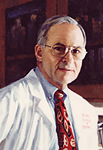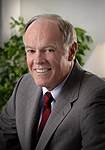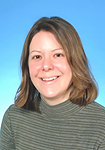|
Nav Bar
|
The National Academy of Clinical Biochemistry
" Advancing Scholarship in Laboratory Medicine"
As the Academy of AACC, NACB’s mission is to elevate the science and practice
of clinical laboratory medicine by promoting research, education,
and professional development in clinical biochemistry. Through its
annual awards program, NACB celebrates the achievements of colleagues
who have made significant contributions through scholarship and
service to the profession. The NACB Awards Committee wishes to thank
the sponsors of these awards and is proud to announce the 2005 Academy
award winners.
NACB Awards Committee
Elizabeth L. Frank, PhD, Chair
Anthony Butch, PhD
Ann Gronowski, PhD
K. Michael Parker, PhD
Roland Valdes, Jr., PhD, FACB
2005 NACB Award Recipients
NACB is proud to recognize the following recipients of its 2005 awards.
NACB DISTINGUISHED SCIENTIST AWARD
For Outstanding Research Advances in the Field of Clinical Biochemistry
Sponsored by Dade Behring, Inc.
The NACB Distinguished Scientist Award recognizes
individuals who have demonstrated significant research accomplishments
in the field of clinical biochemistry. Award recipients have
made noteworthy contributions to the understanding of the biochemistry
of disease, the application of the principles of clinical biochemistry,
or the important use of laboratory techniques.
|
 |
Leonard Jarett, MD, FACB
Dr. Leonard Jarett graduated with honors from Rice University. He then graduated Cum laude from Washington University School of Medicine in St. Louis where he was a member and President of AOA, and received two senior awards, for academics and for research. After medical school graduation in 1962 he began two years of residency in Anatomic Pathology under the tutelage of the late Paul E. Lacy, M.D., Ph.D.
In 1964 Dr. Jarett went to the NIH as a research associate for two years in the laboratory of Dr. Richard Hendler, a well-known membrane biologist. This experience led to Dr. Jarett’s interest in membranes, receptors and signal transduction studies in diabetes mellitus. He returned to Washington University in 1966 as a fellow with Dr. David Kipnis in the Department of Internal Medicine. In 1967, he was appointed to the faculty as an Assistant Professor. His independent area of research began in diabetes and insulin action.
A series of unrelated events which occurred in the next two years led to his career in Laboratory Medicine. First of all, in 1967 he was named a Markle Scholar in medicine for five years. He was awarded his first grant from the NIH. He remained funded from the NIH or other diabetes funding agencies for the rest of his career.
In 1969 Dr. Jarett was appointed the first head of the academic division of Laboratory Medicine in the departments of Pathology and Medicine. He also was made the first full-time Director of the Barnes Hospital Diagnostic Laboratories. He was charged with the development of an academic division built on basic biological research, an excellent teaching program and outstanding service. He developed faculty and trained residents along these lines with great success. In 1973 he was promoted to full professor of Medicine and Pathology. By that time the faculty and the training program ranked as one of the finest in the country, attracting many MD/PhD’s for training, based on Dr. Jarett’s encouragement to do two years of basic research, one of which he would fund.
Dr. Jarett’s accomplishments, both in his research and in his academic career, led to his being offered and accepting the chair of the Department of Pathology and Laboratory Medicine at the University of Pennsylvania, and he moved to Philadelphia in 1980. He urged the department at Penn. to implement the type of program he had created at Washington University. They agreed with enthusiasm. Within five years, they had one of the top departments in the country, based on the quality of the faculty, trainees and fellows and the number and amount of grants.
Dr. Jarett served as chair for three six-year terms, receiving outstanding reviews from external and internal reviewers as well as the faculty, residents and fellows of the department. Among the awards for his achievements in research, teaching and service were: the David Rumbaugh Award, Juvenile Diabetes Foundation; the Alumni Achievement Award, Washington University; Gerald Evans Award, ACLPS; the E. Clifford Torns Award, University of South Alabama; Van Slyke Award, New York section of Clinical Chemistry; Presidential Citation, AACC; Luigi Mastroianni Clinical Innovators Award, University of Pennsylvania; Meritorious Service Award, Pathology Chairs; Gold-Headed Cane Award, ASIP; Special Dean’s Award in recognition of outstanding service and commitment, University of Pennsylvania.
Dr. Jarett’s major research accomplishments included his observations that insulin caused the behavior of occupied insulin receptors on adipocytes to behave differently than any other cells. His research group accomplished this by developing the first electron dense marker for insulin, ferratin-insulin and subsequently nana-gold insulin, and further showed that insulin is internalized to the cell nucleus. He has had numerous publications on insulin’s control of signal transduction. He was elected to the prestigious ASCL and AAP and more recently, as a fellow of the NACB.
Dr. Jarett served in roles outside of the University of Pennsylvania, including serving on study sections, site visits, editorial boards and advisory committees for the NIH, AACC, and the JDF, and other universities’ Diabetes Centers. He served his University as Vice President of the Medical Board, chairman of the Clinical Practices, on the boards of the Diabetes and Cancer Centers, on the board of the Howard Hughes Advisory Committee, and chairman of the committee to review faculty mentoring. He was Assistant Dean of Faculty Affairs for two years. He was the first recipient of the Simon Flexner Chair, established by the Department of Pathology and Laboratory Medicine. Upon his stepping down as Chair, his department endowed the Leonard Jarett Distinguished Professor Chair, and the residents established an Annual Leonard Jarett Research Symposium.
|
THE PROFESSOR ALVIN DUBIN AWARD
For Outstanding Contributions to the Profession and the Academy
Sponsored by Abbott Laboratories, Diagnostics Division
Named in honor of one of the Academy’s founding members and eighth President, this award recognizes a current or past member of the Academy who has made noteworthy contributions to the mission and stature of NACB and whose professional activities have been dedicated to the advancement of laboratory medicine. Click here to read about Alvin Dubin, M.S., FACB.
|
 |
Charles D. Hawker, PhD, MBA, FACB
is Scientific Director of Automation and Special Projects, at ARUP Laboratories, Salt Lake City, Utah, where he has been since 1992. From 1981-1991, Dr. Hawker was with SmithKline BioScience Laboratories (SKBL) in St. Louis, first as Manager of R&D;, then becoming Client Services Manager and later, Technical Director. From 1971-1981 he was with the Laboratory Procedures (Upjohn) in Kalamazoo, Michigan where he directed R&D; and the Laboratory Procedures Esoteric Center. The latter was the first laboratory to perform a parathyroid hormone radioimmunoassay that was widely available in the U.S. to hospitals and physicians. Dr. Hawker was well known for the development of that assay. At its peak in the late 70’s, the laboratory performed over 1000 PTH tests each week, along with a number of other esoteric tests.
Beginning at SKBL and continuing through his position at ARUP Laboratories, Dr. Hawker has been involved in automation. The St. Louis lab was the first in the SKBL network to implement bar coding and computerized specimen storage and retrieval and one of the first to implement a conveyor system to automate specimen processing. At ARUP, he initiated entry into automation with several projects including implementing bar codes, computerized specimen storage and retrieval, and a document imaging system. Dr. Hawker was project manager for the 1998 implementation of an automation system that could transport and sort up to 2000 specimens per hour. In 2004 he led a project team that implemented a major expansion of that system to a capacity of 4000 tubes per hour, which can be doubled again when the laboratory’s growth requires. He also led the implementation of an Automated Storage and Retrieval System in what may be the world’s largest clinical laboratory freezer, measuring 30 x 60 feet and two stories high. This all-robotic system can potentially hold more than 2.3 million specimens and an individual specimen can be retrieved in about 2.5 minutes.
Dr. Hawker served as an officer of the National Academy of Clinical Biochemistry for over nine years – two terms as Secretary and then as President Elect, President, and Past President. He chaired or served on several NACB committees, and presently is serving as the Academy’s Internet Coordinator as well as on the Publications and Finance Committees. He has served on or chaired several AACC committees. He is a past president of the Clinical Ligand Assay Society and also served as President of two of its chapters and in other capacities. He currently serves on the CLSI Strategic Planning Committee and Area Committee on Automation and Informatics and previously chaired the Subcommittee on Automated Communications. For three years he chaired an Automation Special Interest Group in Health Level Seven, leading to a new HL7 chapter on Clinical Laboratory Automation. He has been active in the Association for Laboratory Automation and in 2000 received the ALA’s Becton Dickinson Award for significant contributions to medical systems engineering. Recently, he has been involved in the formation of a chapter of the Laboratory Robotics Interest Group (LRIG) in Salt Lake City.
A native of St. Louis, Dr. Hawker earned a BA in chemistry from Illinois Wesleyan University, an MS in biochemistry from the University of Wisconsin, a PhD in biochemistry from the University of Pennsylvania, and an MBA from Washington University in St. Louis. He is the author or co-author of 39 papers in peer-reviewed journals, 14 invited reviews or chapters in books, and 40 abstracts. He lives in Salt Lake City where he enjoys golf, skiing, and fly fishing along with other interests. He is also very proud of his two children – Michael, an architect in St. Louis, and Jennifer, who is in information technology with a wind power company in Portland, Oregon.
|
THE GEORGE GRANNIS AWARD
For Excellence in Research and Scientific Publication
Sponsored by NACB with support from the Ohio Valley Section of AACC
Named in honor of the NACB’s second President, the George
Grannis award recognizes excellence in research and scientific
publication by a young investigator. Click here to read about George F. Grannis, Ph.D., FACB.
|
 |
Jennifer A. Snyder, PhDgraduated from Michigan State University with a B.S. in Forensic Science, With Honor in 1995. After a brief time as a research assistant, she continued her studies at the University of North Carolina at Chapel Hill in the Department of Biochemistry and Biophysics. There she worked under the guidance of Dr. Ed Collins focusing on the molecular interactions between the T cell receptor (TCR) and the Class I Major Histocompatibility Complex (MHC). She was responsible for the development of recombinant TCR that allowed for additional studies into the physiochemical characteristics of the TCR/MHC interaction including measurement of the half-life and affinity of the TCR/MHC interaction with BIAcore. She also produced diffraction quality protein crystals of the TCR/MHC complex, which resulted in a co-crystal structure published in the journal Immunity in October 2003. The highlight of her research was the discovery that cross-reactive TCR interact with their cross-reactive MHC ligands with a higher affinity and unique orientation when compared to typical TCR/MHC interactions. These findings have important implications for T cell biology, and clinical applications to organ transplantation. After receiving her Ph.D. in June 2002, she received an appointment to spend an additional year studying T cell biology with Dr. Ettore Appella, as a postdoctoral fellow through the Oak Ridge Institute for Science and Education and the National Cancer Institute. In July 2003, she entered the Clinical Chemistry Fellowship program at the University of North Carolina Hospitals with Dr. Catherine Hammett-Stabler, Dr. John Chapman, and Dr. David Grenache. In addition to her clinical responsibilities as a fellow, she has been involved in a number of research projects involving reproductive hormones, maternal fetal medicine, cardiac markers, and immunoassay interference. In July 2004, she successfully sat for the ABCC board examination in Clinical Chemistry. She received honorable mention at the Student Poster Presentation held at the AACC Annual meeting for her poster entitled “A Troponin T Mutation Found in Cardiomyopathy Alters Immunoassay Response”. She has published in Immunity, Journal of Immunology, Journal of Biological Chemistry, and Clinica Chemica Acta, and is a contributor to the forthcoming editions of Tietz Clinical Guide to Laboratory Tests and Tietz’s Applied Laboratory Medicine. Her research interests include biomarker identification, immunoassay development and troubleshooting, proteomics, and molecular medicine.
|
|



